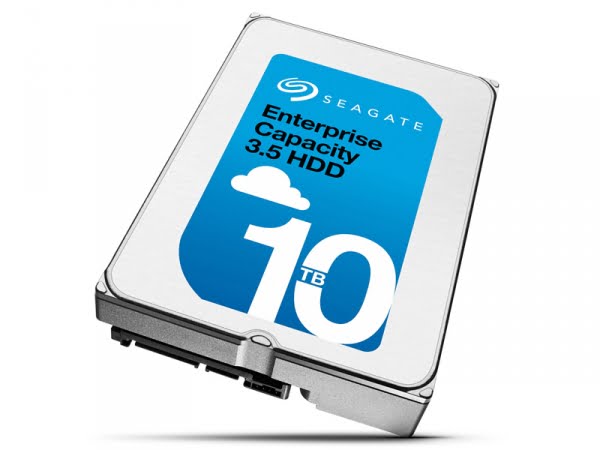

Earlier this week, Seagate released its first 10 TB helium-filled enterprise class 3.5-inch hard drive, posing a threat to its main rival, Western Digital.
Even though it will take a little time before you can purchase the storage units, know that Alibaba and Huawei signed up for having the hefty storage units in their data centers. With no official pricing information, we can assume that companies are willing to invest in giant HDDs from the Cupertino-based company which will likely shell off about $800 per piece.
“Cloud-based data center storage needs are expanding faster than many current infrastructures can sustain, rendering the capacity demands of users a herculean task for cloud managers,” said Mark Re, senior VP and CTO at Seagate
In comparison with Seagate, who now takes its first steps into heavy-weight storage capacity, Western Digital/HGST already has three years of experience manufacturing extremely large HDDs.
Another difference between the two companies was how their transparency and communication strategies looked.
HGST took a very relaxed and open position, sharing technical information about its helium-filled hard drives, whereas Seagate tiptoed around the subject in blurry and inconsistent press releases.
What Seagate told the media is that its 10 TB drive features seven platters and 14 heads, but did not go into detail over the spindle speed. Most likely, we are looking at a moderate 7200 RPM.
The Cupertino-based manufacturer underlines in its press release that the new HDD uses Seagate’s proprietary PowerChoice technology in order to consume little energy, but keeps mum on how exactly does the innovative power saving tech work.
You should know that the leviathan storage hardware comes in two variants: a 6 Gbps SATA interface and a speedier, 12 Gbps SAS.
Seagate boasts that it upped the Mean Time Between Failure (MTBF) to a whopping 2.5 million hours. Former non-helium filled enterprise dives from the company had a MTBF of 2 million hours, so the increase is a strong 25 percent. Main market rival HGST also says it delivers a MTBF of 2.5 million hours in its helium-filled 10 TB hard drives.
There is a strong chance that Seagate’s latest large-size storage hardware makes good use of perpendicular magnetic recording (PMR) instead shingled magnetic recording (SMR). Until recently, using SMR provided Seagate the opportunity to stay close to HGST when it comes to size. However, its technical drawbacks mean that companies will rather choose a PMR HDD for online storage and leave SMR HDDs for archiving large quantities of data.
If this proves true, Seagate’s 10 TB helium-filled PMR drive could match the Ultrastar He 10 from HGST’s, which came out in December last year.
There is a good reason why HDD manufacturing companies started ditching air from their hermetically sealed enclosures, replacing it with helium. The rare gas is thinner than old-fashioned air, meaning that the fast rotating roundels get less friction from it, resulting in lower power consumption and improved reliability.
Helium-filled HDDs also permitted the two big companies in the storage industry to cram seven platters in the 3.5-inch HDDs, extending the storage capacity. Air-filled storage units only had six platters.
It should be mentioned that the rare gas is not a wonder ingredient. Helium cannot enlarge the areal density of the platters. How will the manufacturers pass the 10 TB barrier, then?
One way is to implement novel read/write technologies that allow the already super-tiny magnetic data holding grains to get even smaller. Heat-assisted magnetic recording (HAMR) might do just that, and Seagate already took interest in the technology. HAMR uses a little laser that sits alongside the read/write head, and heats up small regions of the platter, thus increasing storage space.
To exemplify, in a 2 TB storage drive, there are two platters and four read/write heads. When HAMR will be fully operational, it will increase the areal density so that one platter and one set of heads could be entirely eliminated.
Seagate could release HAMR HDDs sometime this year, and we will let you as soon as it does.
[“source-gadgets.ndtv”]

